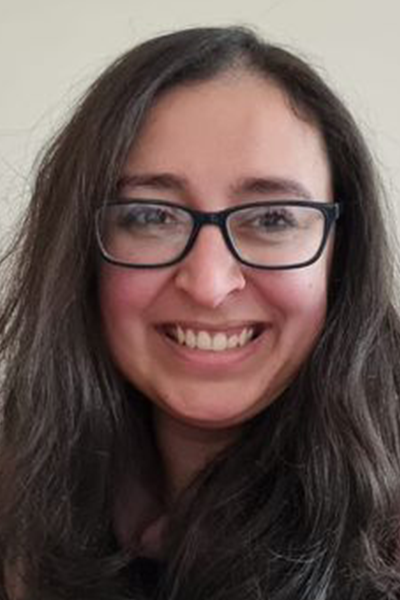Hi, my name is Dr Nadia Balmain, and I am a Chartered Clinical Psychologist at EMDR Treatment. I specialise in treating people who have experienced trauma or have PTSD or Complex PTSD symptoms. Jeremy has asked if I could share some information about trauma, EMDR and our service.
I have worked in the NHS in primary and secondary mental health services and in private practice for over 15 years. Many of the clients I have worked with during this time have experienced some form of trauma in their lives. Below, I have shared what I know about trauma and what helps, based on research and my professional experiences.
What is TRAUMA and PTSD?
Trauma is an experience or incident that is overwhelming, distressing, or disturbing. It can occur either once or multiple times over a long period. The trauma can also vary in terms of what happened, when it happened and how distressing it was and still is.
Examples of trauma include experiencing child sexual abuse, adult sexual abuse, domestic violence, physical abuse, emotional abuse, and neglect. However, these are just some examples of what a traumatic experience can be.
PTSD stands for Post Traumatic Stress Disorder and can include symptoms such as:
- Experiencing intrusive, distressing, or disturbing memories of the traumatic event(s).
- Distressing dreams.
- Feeling as though you are back in the memory.
- Feeling distressed or overwhelmed by triggers such as places, certain situations, sounds and smells that resemble the trauma.
- Avoiding anything that are reminders of the trauma, such as certain places or situations.
- Negative beliefs and distressing thoughts.
These are just some of the symptoms people with PTSD can experience.
What is Complex PTSD?
Complex PTSD is similar to PTSD, but people can also experience:
- Intense and persistent shame and guilt
- Frequent and persistent negative beliefs about themselves, such as ‘I am worthless’ or ‘I am to blame’.
- Feeling disconnected to other people
- Relationship difficulties
Often, people who have complex PTSD symptoms are more likely to have experienced trauma earlier in life (Childhood), there are multiple trauma incidents over a long period and the perpetrator was someone close to them that was in a position of trust.
Can trauma cause other mental health symptoms?
Many people who have experienced trauma may not have PTSD symptoms but can experience other mental health symptoms instead, including:
- Anxiety
- Depression
- OCD
- Eating Disorders
- Addictions
- Chronic pain
What treatment is usually recommended?
For several years, Eye Movement Desensitisation and Reprocessing (EMDR) and Trauma-focused Cognitive Behavioural Therapy (TF-CBT) were the recommended treatments for trauma and PTSD in the UK. This is because evidence at the time indicated they were both the most effective at treating trauma and alleviating the PTSD symptoms. However, research has now found that EMDR is more effective than TF-CBT in producing long term lasting positive results.
In other words, when clients feel better, they continue to feel this way long after completing EMDR and when they were followed up in research studies. I have found in my own experience that EMDR had the best results for my clients, and my colleagues reported the same.
What is EMDR?
EMDR stands for Eye Movement Desensitization and Reprocessing. It was originally developed to treat PTSD but has now been found to treat many different mental health symptoms.
The therapy involves the therapist asking the client questions about the trauma and then usually asking them to follow an object with their eyes, such as their fingers or a light bar. Although this might sound strange, it enables the client to reprocess the trauma so that it is less raw and distressing. It also enables people to make sense of what happened in a way that is helpful for the client.
The research has found that people who have EMDR no longer meet the criteria for having PTSD, most if not all their symptoms are significantly reduced or no longer exist. Brain scans have also found that your brain changes. Again, this change is a long-term outcome and so once the trauma(s) is reprocessed with EMDR then that progress stays.
Therapists must be qualified therapists before they are able to do EMDR training. Accredited EMDR training teaches therapists to deliver EMDR in a safe and contained way.
What our service does
During my time working in the NHS, I found that people had to wait for at least two years, and sometimes five years, to access EMDR. Often, there would also be a waiting list for ‘therapy’ which wouldn’t guarantee the client would get EMDR at the end of their long wait.
I also found that clients were paying or using their health insurance to access therapy, which again wasn’t EMDR because they either didn’t know about it or were suggested a different therapy. People were coming to me with bad experiences with therapy or that it didn’t work, and when I investigated it, the therapist hadn’t delivered EMDR even though there was trauma.
All of this led me to create a service that provided EMDR that was accessible and effective. I reached out to colleagues and therapists I knew were highly trained in EMDR, and that’s when EMDR Treatment was born. We now have accredited EMDR Therapists located across Wales, England and Scotland.
All our therapists are vetted and equally passionate about providing accessible and high quality effective EMDR.
There are a variety of ways clients access our service such as being self-funded, family or spouse funded, through their health insurance or by an organisation such as work or a charity funding the sessions.
I am considering EMDR for myself or someone I know.
If you are considering EMDR for yourself or someone else, please get in contact with us.
You can contact us at www.emdrtreatment.co.uk or visit our LinkedIn page.
I hope what I have shared is helpful and thanks for taking the time to read this.

